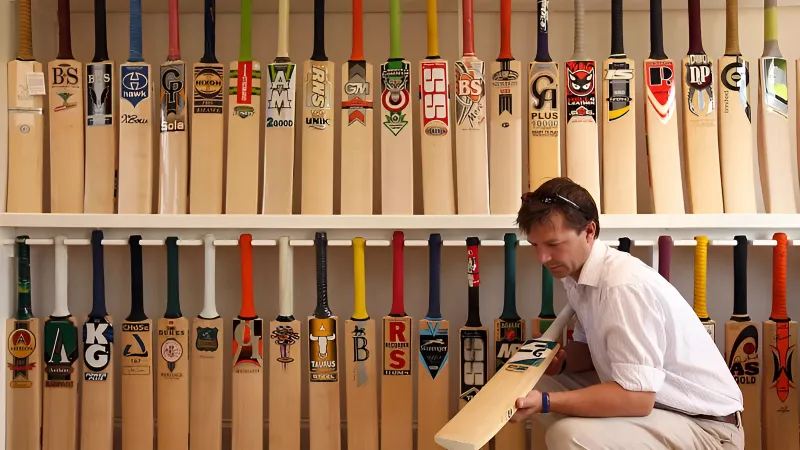Have you ever wondered where your cricket bat originates? With every straight drive or towering six, there is a backstory, starting decades before, in the willow farms found in the English countryside. Here’s the rub: the unquenchable demand for bats in the modern game now exceeds the trees they are made from. If you are a cricket lover, get ready — we are at the center of a seemingly quiet crisis that could change the game forever.
The Bat Boom Nobody Predicted
In a time gone by, cricketers utilized the same bat for sport for years—and often, depending on who you talked to, patched it up to get a little extra run out of it. Mike Gatting of England once famously said he used three bats all year. Now we are in a situation where Steve Smith has 18 or more bats with him in a single series. What has changed? The answer’s pretty clear: blame it on the T20 whirlwind that’s swept through cricket. More games, more power hitting, and more people searching for that perfect “feel” have pushed bat demand sky high.
But the thing is, each bat starts life as a part of a willow tree that takes 15 to 20 years to reach maturity. As Jeremy Ruggles of JS Wright & Sons, one of the oldest willow growers in England, observed, the demand has increased quickly with IPL, and the willow growers are still trying to catch up. Back in 2008, when T20 cricket was still very young, they didn’t grow enough trees to meet the current demand.
Climate Change & The Grain Debate
Even if we began planting trees today, climate change is presenting a complication. With warming winters and longer growing seasons, willows have achieved maturity in even little as 12 years. While this might sound positively great, it isn’t as good as it sounds. Faster rates of growth mean wider grains on a bat’s face — one thing that bat geeks can’t help but obsess over.
Narrow-grain bats, from slow-grown trees, are traditionally prized for being “match-ready” — less knocking in, better ping. But they’re less durable. Wide-grain bats, while sturdier, aren’t considered as glamorous. Ruggles admits he’s been advocating for wide-grain bats for years, but perception is a tough nut to crack.
Social media doesn’t help either players flaunt their sleek, narrow-grain bats, making young cricketers think that’s the holy grail. The irony? Those beautiful bats break faster, which means professionals burn through them like disposable razors. The cost of this high turnover? Guess who pays for it? You, the everyday cricket lover shelling out extra for their gear.
Smarter Solutions or Stubborn Tradition?
The good news? Solutions are being tossed around. The MCC recently hosted a “bat emergency” conference (yes, it’s that serious), discussing alternatives like laminated bats. Think of it as bat recycling — combining pieces of willow with other woods like Kashmir willow to make affordable, durable bats. These could cost as little as $65.
But, as always, tradition gets in the way. Purists argue that cricket bats should be single-piece willow clefts, not stitched-together composites. Yet with demand only growing and willow supply struggling, maybe it’s time to rethink that romanticism. JS Wright is also doing its bit by planting more trees than it cuts, but with diseases, drought, and poor planting standards by some growers, the road ahead remains tricky.
Cricket’s willow crisis isn’t just about wood — it’s about time, tradition, and the future of the game. With every flashy new bat that hits the market, we edge closer to exhausting a resource that can’t be rushed.
To catch up on the most current news on all of your favorite thrilling cricket updates, visit Six6slive to access our comprehensive Latest News, insightful analysis, and updates. Connect with the action now to make sure you never miss out!
